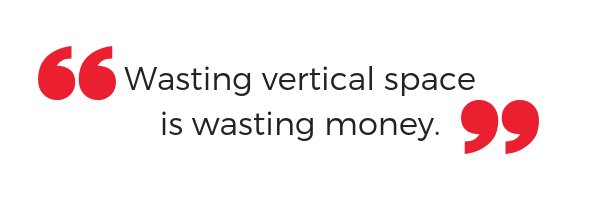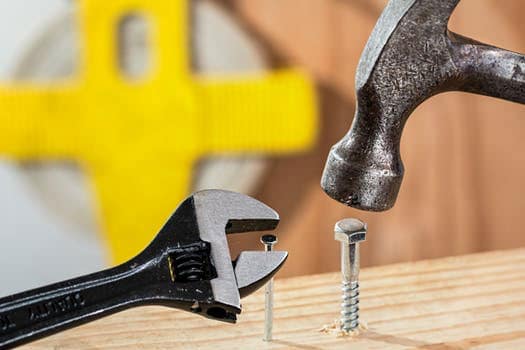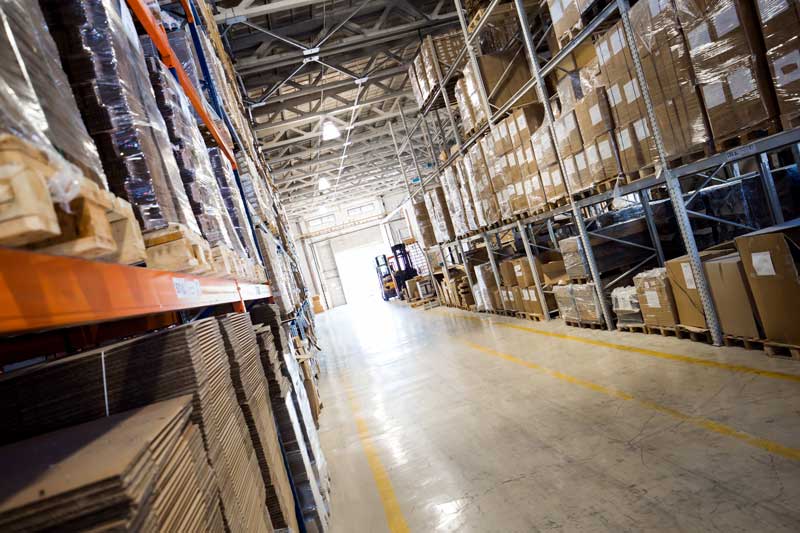Looking to tighten the belt in your warehouse? Here are five material handling costs that can kill your bottom line, as well as strategies for avoiding them and optimizing your storage operations.
Wasted Vertical Space in the Warehouse
Let’s start with the low-hanging fruit: wasted vertical space. Wasting vertical space is the same as wasting any other kind of space. You wouldn’t rent or buy a new warehouse facility before maxing out the floor space of your current facility, right? The same should apply to how we think about vertical space. This principle is even more important for warehouses that are taller than they are wide, which are common in urban settings.

Wasting vertical space is wasting money. Fully utilizing vertical space, on the other hand, lets you store more inventory while taking up the same amount of floor space.
How do you start using vertical space for storage? The most common way is to use a pallet rack system. This could be in the form of standard selective pallet racking or a dynamic system that’s customized to the user’s needs. Another way to better utilize vertical space is by adding a mezzanine to the warehouse. Mezzanines can double or even triple the available floor space in a warehouse for 80% less cost than building an addition. Whichever solution you choose, it’s important to plan for the future. Installing taller racking, for example, allows room for future growth even if it’s not currently needed.

Excessive Material Movement
Excessive material movement has several consequences. For one, excessive material movement wastes time, which is a direct material handling cost to the organization. The more efficient product movement is, the more productive workers can be in the same amount of time. Like wasted space, wasted time means wasted money. At the same time, removing excessive material movement offers an opportunity to save money by increasing labor efficiency.
Excessive material movement also means excessive wear and tear on both personnel and equipment, quickly leading to burnout for both. We want to avoid this at all costs.

Using Material Handling Equipment Incorrectly
Material handling products are tools. Like any tool, material handling equipment won’t magically improve warehouse operations. The person or organization using the equipment will need to use it correctly in order to really maximize its benefits. For those unfamiliar with the basic principles of material handling and warehouse storage, we recommend consulting with material handling pro for this reason.
It’s also important to periodically revisit your storage equipment setup to assess whether or not you’re using the right tools for the job. Shifting from one type of pallet rack system to another or simply incorporating another type of system can have hugely positive impacts on operational efficiency. As the market changes and demand for products shifts, your storage and fulfillment strategy should adapt to meet those demands.
Finally, make sure all equipment operators are properly trained. Training not only leads to proper equipment usage but also safe equipment usage.

Inefficient Inventory Storage
It’s common to see product storage space misallocated. For example, small products may be given more space than is necessary, while larger products aren’t given enough. As a warehouse manager, you can minimize the threat of improper inventory storage using a system called “slotting.”
Inventory slotting means having a data-backed strategy for where and how inventory is stored, based on factors such as how quickly the SKUs move. It’s a good idea to periodically review inventory movement to determine whether or not to re-slot inventory. This process also provides an opportunity to pinpoint any slow movers and get rid of excess inventory.
Improper inventory storage is closely related to excessive material movement. For example, if your fastest-moving SKUs are located at the opposite end of the shipping and receiving area, you might have an issue with excessive product movement.

Unnecessary Motion
“Unnecessary motion” refers to individuals physically moving more than is required to complete the task at hand. It might sound like we’re really nitpicking now, but unnecessary motion can add up to major costs over time. In fact, according to the U.S. Census Bureau, it costs us about $4.3 billion every year.
This wasted motion also opens up the door to quality control and safety issues. Moving more than is necessary causes greater fatigue for workers. This, in turn, increases the likelihood of picking errors and run-ins with heavy equipment. Unneeded movement can be tricky to spot because of how ingrained certain activities seem to be in one’s job.
It’s the duty of the warehouse manager to always be thinking of new ways to eliminate wasted effort on the part of workers, whether it be through the use of new technology, better processes, a better layout, or something else. This can take some imagination, but the payoff is worth it in the long run.
Ready to Cut Down on Material Handling Costs?
Are you ready to take the first step in making your warehouse more efficient? Give us a call to speak with a Systems Design Specialist or email us with the details of your project. We’ll be in touch within a day.
Let’s Talk
Ready to get started? Or have questions about any of our products or services? Fill out the form and a representative will contact you promptly.
About AK Material Handling Systems
We deliver value to our customers by providing the absolute best combination of quality products, helpful customer service and competitive pricing. We specialize in warehouse layout & design, pallet rack systems, engineered sales, mezzanines, modular offices and completed turn-key warehouse systems. For more information email us or call (800) 722-5908
Let’s Talk
Ready to get started? Or have questions about any of our products or services? Fill out the form and a representative will contact you promptly.
About AK Material Handling Systems
We deliver value to our customers by providing the absolute best combination of quality products, helpful customer service and competitive pricing. We specialize in warehouse layout & design, pallet rack systems, engineered sales, mezzanines, modular offices and completed turn-key warehouse systems. For more information email us or call (800) 722-5908

